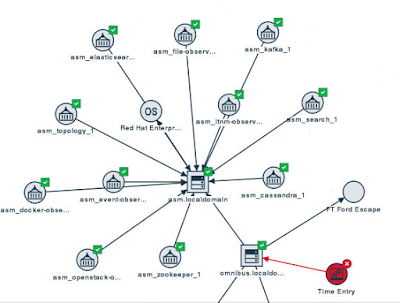Introduction
The ASM documentation references "swagger" and "swagger URLs" for several different services. The purpose of this post is to describe what this actually means.
What is swagger?
Here's a statement from swagger.io:
The goal of Swagger™ is to define a standard, language-agnostic interface to RESTAPIs which allows both humans and computers to discover and understand the capabilities of the service without access to source code, documentation, or through network traffic inspection.
So the goal of this article is to show what that statement actually means to you in the context of Agile Service Manager.
Swagger URLs for ASM
There are 7 different services that are accessible via a browser. My ASM host is named "asm", and here are the URLs I have for the services:
File Observer Swagger UI
http://asm:9098/1.0/topology/observer/swagger/#/
topology-service Swagger UI
http://asm:8080/1.0/topology/swagger#/
search service Swagger UI
http://asm:7080/1.0/search/swagger
ITNM observer Swagger UI
http://asm:9080/1.0/topology/observer/swagger
OpenStack observer Swagger UI
http://asm:9082/1.0/topology/observer/swagger
Event observer Swagger UI
http://asm:9084/1.0/topology/observer/swagger
Docker observer Swagger UI
http://asm:9086/1.0/topology/observer/swagger
Topology Service
The Topology Service is the one that will be the one you normally want to visit to view (and even change) data about the resources in the ASM database. Here's what you'll see when you access the URL:
You can click on each section to see the operations associated with each. The section I like is Resources. Here are the operations found there:
From here, you can click on one of the operations, such as the first one: GET /resources. Here's just the first part of what's displayed there:
Notice that it gives you documentation about the operation and lots of other information. Specifically, it provides you with the ability to fill in values for all of the parameters that the operation accepts AND allows you to execute the operation! It also provides you with the 'curl' command that you can run from the command line to execute the exact same operation, with the exact same parameters.
The way to execute the operation is to click the "Try it out!" button at the bottom of the operation documentation.
And there you go! Some data. In this case, what's returned is the ID of the node in the topology that matches the criteria I specified. I can then take this ID and use it as input to other operations in this same group or in other groups.
Try it out and have fun
The above is just an short entry point into ASM's swagger UIs. Play around with them and you'll see that you can do some interesting stuff.






